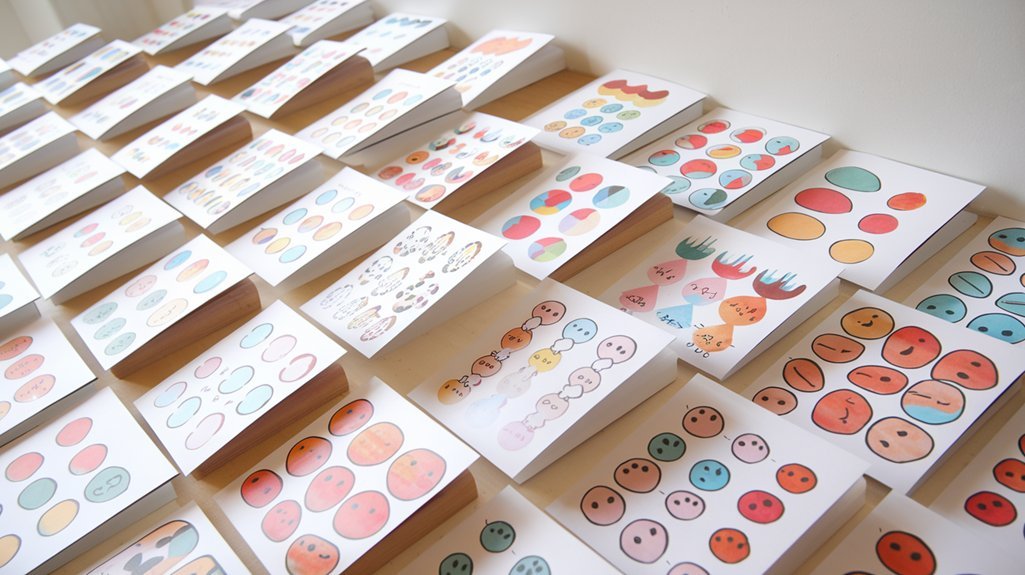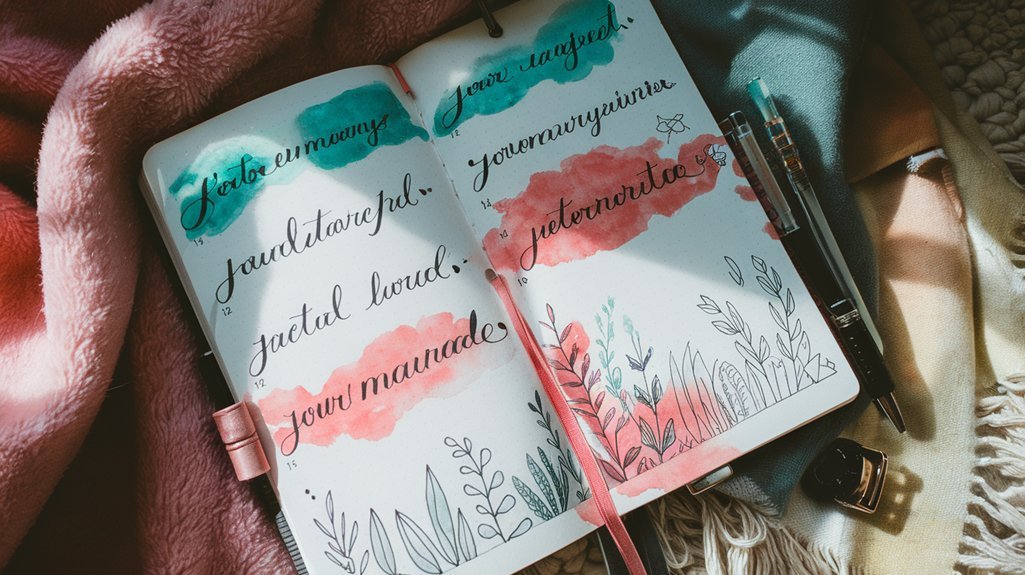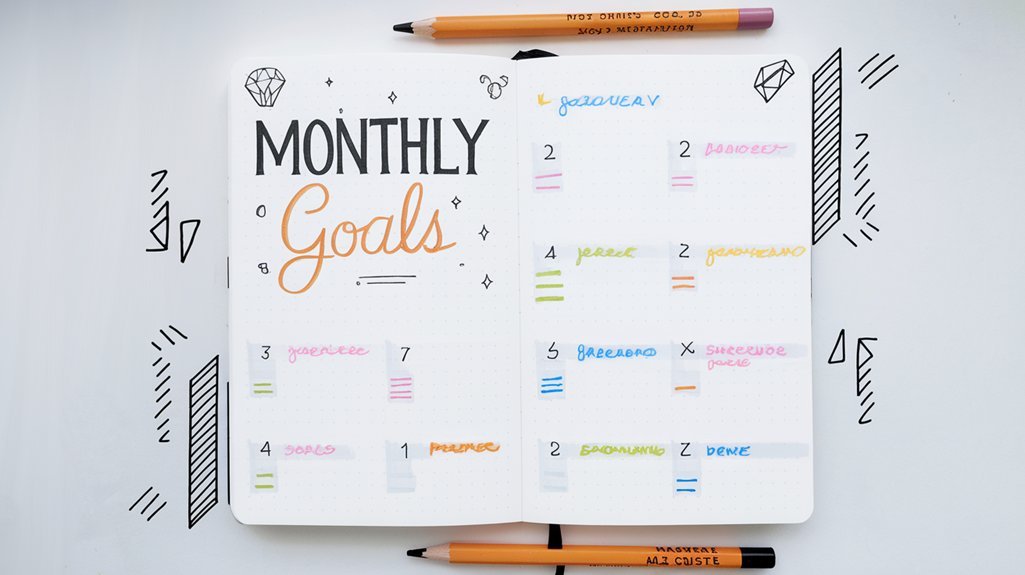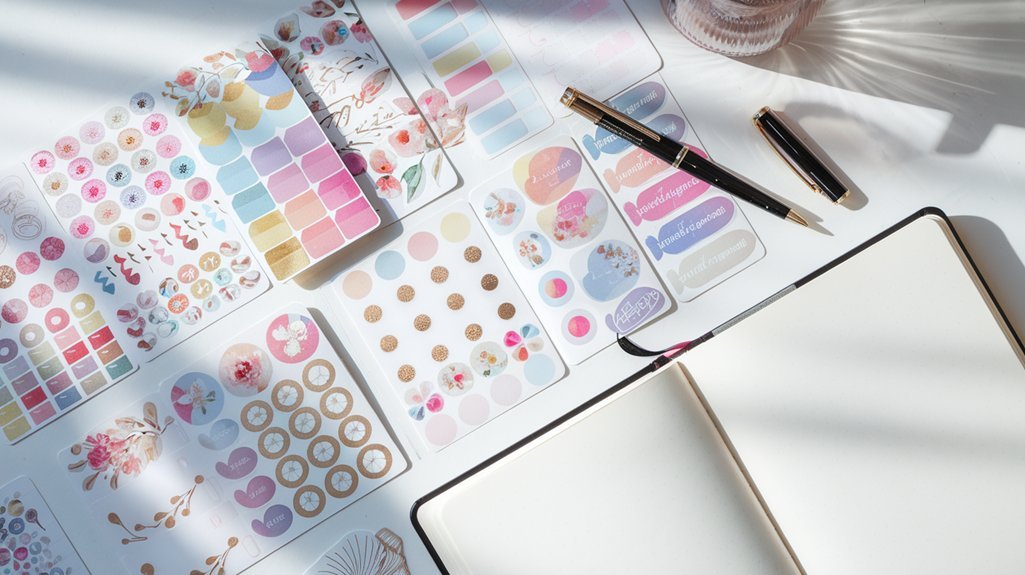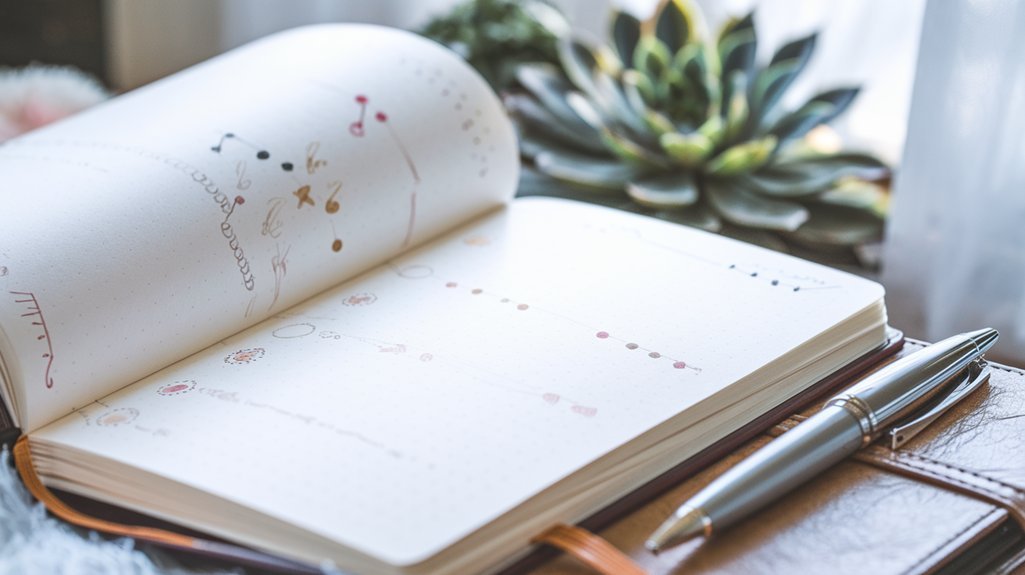The most effective printable bullet journal mood templates include circular monthly trackers with 31 segments, simple daily scales using numbers or emojis, colorful mandalas for emotional expression, habit-mood combination grids, and weather-inspired monitoring layouts. These evidence-based designs enable systematic tracking of emotional patterns, behavior correlations, and seasonal mood fluctuations. Each template type serves distinct documentation needs while maintaining user engagement. Further exploration of these formats reveals additional customization options for ideal mood tracking success.
Monthly Mood Circle Tracker Templates
Monthly mood circle trackers provide a compact visual format for monitoring emotional patterns throughout a 31-day period. These circular templates divide emotional states into segments, similar to multi color mood rings, allowing users to color-code their daily feelings. The circular design maximizes space efficiency while maintaining visual clarity for long-term pattern recognition.
The templates typically feature 31 equal segments arranged in concentric circles, with each ring representing different aspects of emotional well-being. Users can integrate these trackers with seasonal mood charts to identify correlations between weather patterns and psychological states. The circular format enables quick identification of recurring emotional cycles and potential triggers.
Common template variations include single-ring designs focusing on primary emotions, or multi-ring layouts tracking additional factors such as energy levels, sleep quality, and stress intensity. This systematic approach to mood tracking facilitates data-driven insights for mental health management and personal growth.
Simple Daily Mood Scale Layouts
Simple daily mood scale layouts offer a streamlined alternative to circular tracking systems, utilizing linear formats that prioritize quick daily entries and straightforward data visualization. These templates typically employ numerical scales (1-5 or 1-10) or emoji-based indicators to represent emotional states throughout the day.
The linear design facilitates positive mood journaling by presenting clear progression patterns and emotional trends over time. Users can document their mood states using color-coding systems, simple symbols, or numerical values, making it easier to identify triggers and patterns. Common layout variations include horizontal bar graphs, vertical columns, or simple checkbox grids.
Effective mood evaluation strategies incorporate these simplified layouts to reduce the barriers to consistent tracking. The straightforward nature of these templates encourages daily participation and maintains engagement in the journaling process. Research suggests that uncomplicated tracking systems lead to higher completion rates and more accurate emotional self-assessment over time.
Colorful Mood Mandala Designs
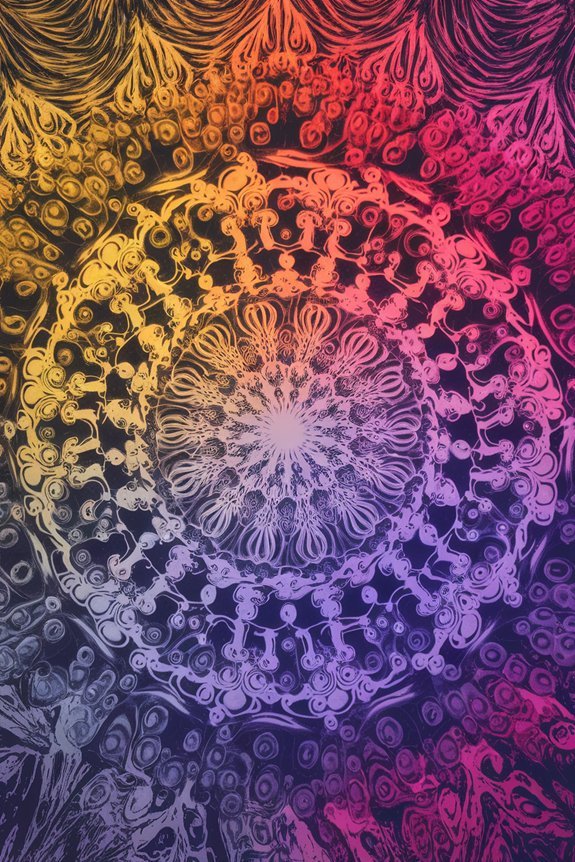
Intricate mood mandala designs transform traditional emotion tracking into an engaging artistic practice while maintaining therapeutic value. Studies indicate that coloring mandalas can reduce anxiety and enhance mindfulness. These vibrant mood mandalas utilize color psychology and geometric patterns to represent emotional states systematically throughout a given time period.
- Concentric circles filled with varying hues reflect emotional intensity levels
- Radiating patterns capture the flow and evolution of daily mood shifts
- Sacred geometry elements promote focus and mental clarity during tracking
- Color gradients enable nuanced expression of complex emotional states
The implementation of intricate mood mandalas in bullet journals combines artistic self-expression with structured mood monitoring. Research demonstrates that this creative approach increases user engagement and consistency in mood tracking. The circular format allows practitioners to identify emotional patterns visually while the meditative aspects of coloring support stress reduction and emotional regulation. This method proves particularly effective for individuals who respond positively to art-based therapeutic practices.
Habit and Mood Combination Trackers
By combining mood monitoring with habit tracking in a unified template, practitioners can identify correlations between daily routines and emotional states. These integrated trackers typically feature a grid system where habits are listed vertically and dates horizontally, with designated spaces for emotional state reflections alongside each entry.
The combination format enables users to observe mood activity connections, revealing patterns between specific behaviors and psychological well-being. Common tracking elements include sleep quality, exercise frequency, meditation practice, and nutritional choices, each paired with corresponding mood indicators. Users can employ color coding, numerical scales, or symbol systems to record both habits and emotions efficiently.
Research suggests that this dual-tracking approach increases self-awareness and facilitates behavior modification. When patterns emerge showing positive mood correlations with certain habits, individuals can make informed decisions about lifestyle adjustments, leading to improved emotional regulation and mental health outcomes.
Weather-Inspired Mood Monitoring Templates

Weather icons serve as intuitive visual metaphors for emotional states in mood monitoring templates, allowing users to record their feelings through familiar meteorological symbols. These templates facilitate tracking seasonal mood patterns by associating emotional states with weather conditions, enabling individuals to visualize changes in mood over time through recognizable imagery.
- Sunny icons represent positive emotions, optimism, and mental clarity, resonating with feelings of warmth and brightness
- Storm clouds symbolize turbulent emotions, anxiety, or overwhelming situations, reflecting internal turmoil
- Rainbow imagery indicates conversion periods or emotional breakthrough moments, inspiring hope
- Fog represents uncertainty or mild depression, acknowledging temporary emotional unclear states
The systematic documentation of mood through weather symbols provides users with a methodical approach to emotional self-awareness. This visual system helps identify patterns, triggers, and emotional trajectories, offering valuable insights for mental health management and personal growth while maintaining an accessible, non-clinical recording method.
Conclusion
Printable bullet journal mood templates serve as powerful tools for emotional self-awareness, much like a compass guiding travelers through uncharted territories. Research indicates that consistent mood tracking leads to better mental health outcomes and emotional regulation. Whether choosing the methodical Monthly Circle Tracker or the artistic Mood Mandala designs, these evidence-based templates offer practical solutions for monitoring emotional patterns and facilitating meaningful lifestyle adjustments through visual documentation.

